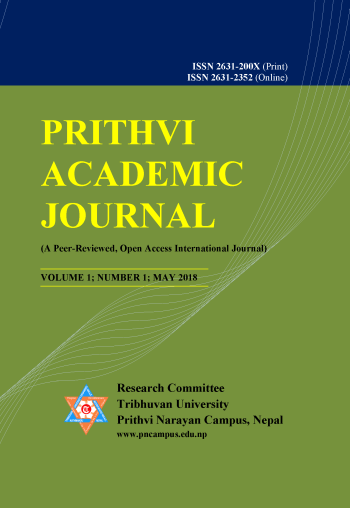Cost Recovery and Donor Dependency Status of LI-BIRD
DOI:
https://doi.org/10.3126/paj.v1i1.25895Keywords:
NGO, cost recovery, donor dependency, LI-BIRDAbstract
There is significant growth in a number of non-governmental organizations (NGOs) in Nepal since the 1990s. However, there is lacking of research in the area of financial sustainability of such NGOs. This paper attempts to deal with this issue through a case study of a single NGO. Using data extracted from audit reports and financial statements of the period of fiscal year 2007/08 –2016/017, this paper examines the cost recovery and donor dependency status of LI-BIRD, a national level NGO in Nepal. Financial ratios, trend analysis and regression model have been used to analyze the data. The paper concludes that there is an increasing trend in the total revenue and total expenditure of LI-BIRD. It is able to recover the overall cost only if donors' grants are included in its income sources. If donors' grants are excluded from the total income, its cost recovery ratio is only 51 percent. LI-BIRD has been highly dependent on donors' grants and its dependency ratio has slightly increased during the study period. The implication of the finding is that LI-BIRD should focus on its internal resource generation programs like seed unit, lab unit, and other cost effective units to come out of the vicious cycle of donor dependency and to stand alone without the support (or with less support) of donors. For this, policymakers should also provide the necessary legal basis to generate funds and legitimate income-producing endeavors.




